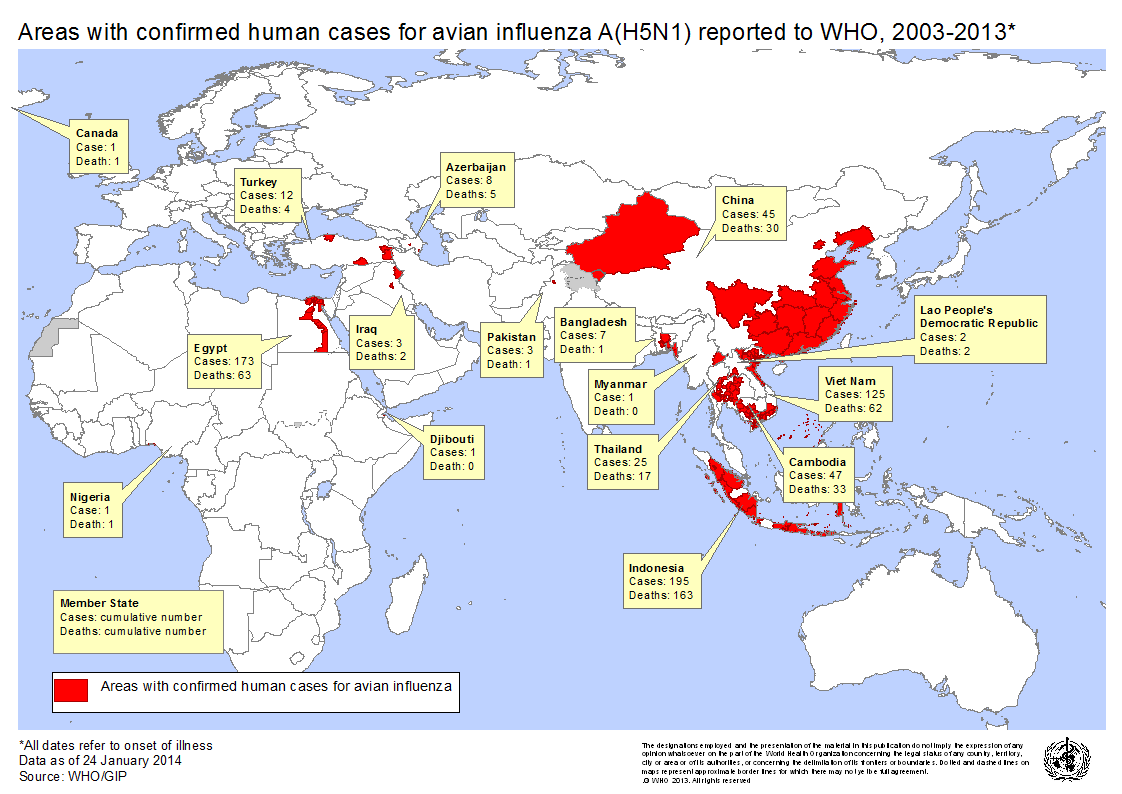Section 1. Avian Influenza Facts
Bird Flu - Highly Pathogenic Avian Influenza (HPAI) H5N1
Bird flu is often used synonymously with avian influenza (AI), however, bird flu specifically refers to the HPAI H5N1 strain that has killed millions of birds. HPAI H5N1 is also one of the few avian influenza viruses that has crossed the species barrier and infected humans. Emerging from Hong Kong in 1997, it has caused the largest number of confirmed cases of severe disease and death in humans from an AI virus.2
More than 800 human infections with Asian HPAI H5N1 viruses have been reported to WHO from primarily 16 countries in Asia, Africa, the Pacific, Europe, and the Near East since November 2003. Indonesia, Vietnam, and Egypt have reported the highest number of human HPAI Asian H5N1 cases to date.4

HPAI Asian H5N1 has not been reported in the United States, however, it is possible that bird flu could enter the country via migratory birds. In order for H5N1 to enter the United States, infected wild birds from Asia or West Africa would have to survive the disease and carry it to breeding grounds in the Pacific Islands, Alaska, or Canada. The virus would then have to pass to another species that migrates to the continental United States.6